


|
|
|
 he steps for sharpening
skew chisels and
gouges are
roughly the same as they are for flat chisels. First, flatten the back
of the skew or the pod (concave curve) of the gouge. Thereafter, sharpen
the bevel, working your way up through finer and finer abrasives.
Finally, remove the burr that forms at the cutting edge. he steps for sharpening
skew chisels and
gouges are
roughly the same as they are for flat chisels. First, flatten the back
of the skew or the pod (concave curve) of the gouge. Thereafter, sharpen
the bevel, working your way up through finer and finer abrasives.
Finally, remove the burr that forms at the cutting edge.
However, because the shapes
of these tools are more complex than flat chisels, it’s harder to
maintain the bevel angle. You must either feel the angle
or devise some method of holding the
blade.
|

|
Turners often grind back the ears on the
shaping gouges they use to create spindles and bowls. This lets
them cut concave shapes. Roughing gouges, on which the ears
remain even with the nose, are used to round stock.
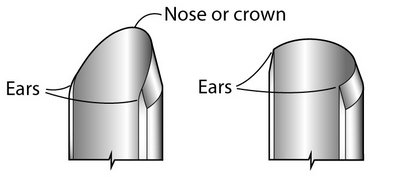 |
Sharpening a skew
|
|
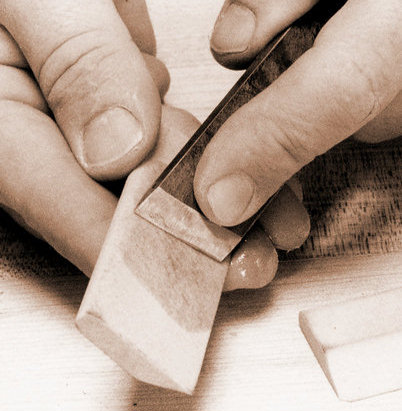
1
When sharpening a skew by hand, you must grind without the benefit of a
guide. Feel for the correct angle, resting the bevel flat on the stone.
Then lock your wrist in place to maintain that angle as you sharpen. If
you have trouble feeling the angle on a large stone, try a smaller slip
stone. Press the stone against the bevel with your fingertips. |
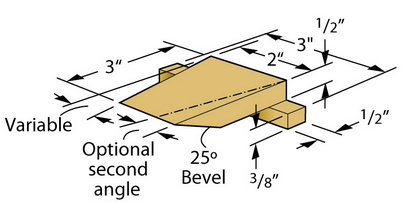
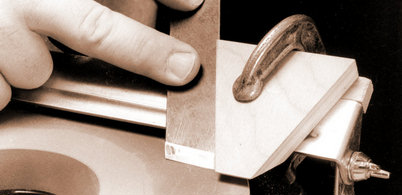
2
When sharpening a skew on a sharpening
machine, make a guide block with an angled side and clamp it to the tool
rest. Hold the side of the chisel against the angled side as you work.
The angle of the tool rest controls the bevel angle, and the angled side
of the block controls the skew angle. NOTE: When sharpening a
skew chisel with a double bevel, such as a lathe skew, make a guide
block with two angled sides, each side a mirror image of the other.
|
Sharpening a gouge
|
|
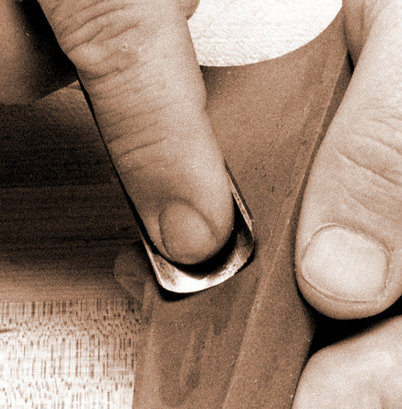
1
When hand sharpening a gouge, use a gouge slip. The rounded surfaces on
the stone fit the curved cutting edge and pod of the tool. Put your
fingertips in the pod opposite the bevel to help feel the angle.
|
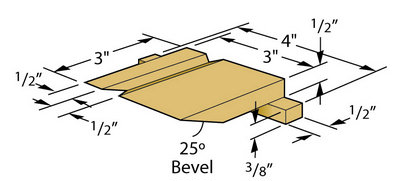
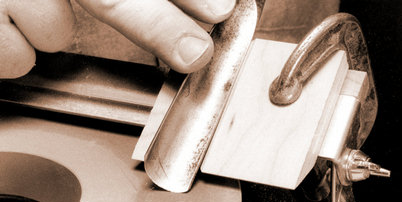
2
To sharpen a gouge on a sharpening machine, make a guide block with a
V-groove and clamp it to the tool rest. Rest the blade of the gouge in
the V and hold it there as you roll the tool from side to side. Press
the tool forward gently to keep the cutting edge against the abrasive as
the gouge rolls.
|
3
After finishing the bevel, use a round stone file to remove the burrs
from the cutting edge of a gouge. Lightly stroke the concave surface of
the pod with the file.
|
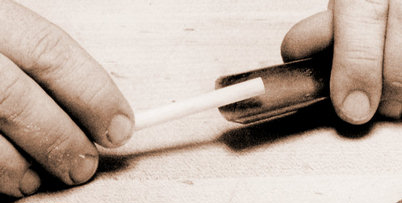 |
|

Back to the top
|
|
   |